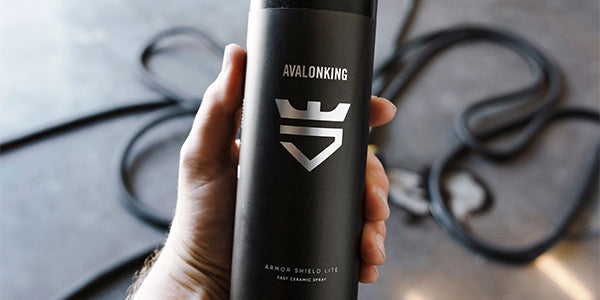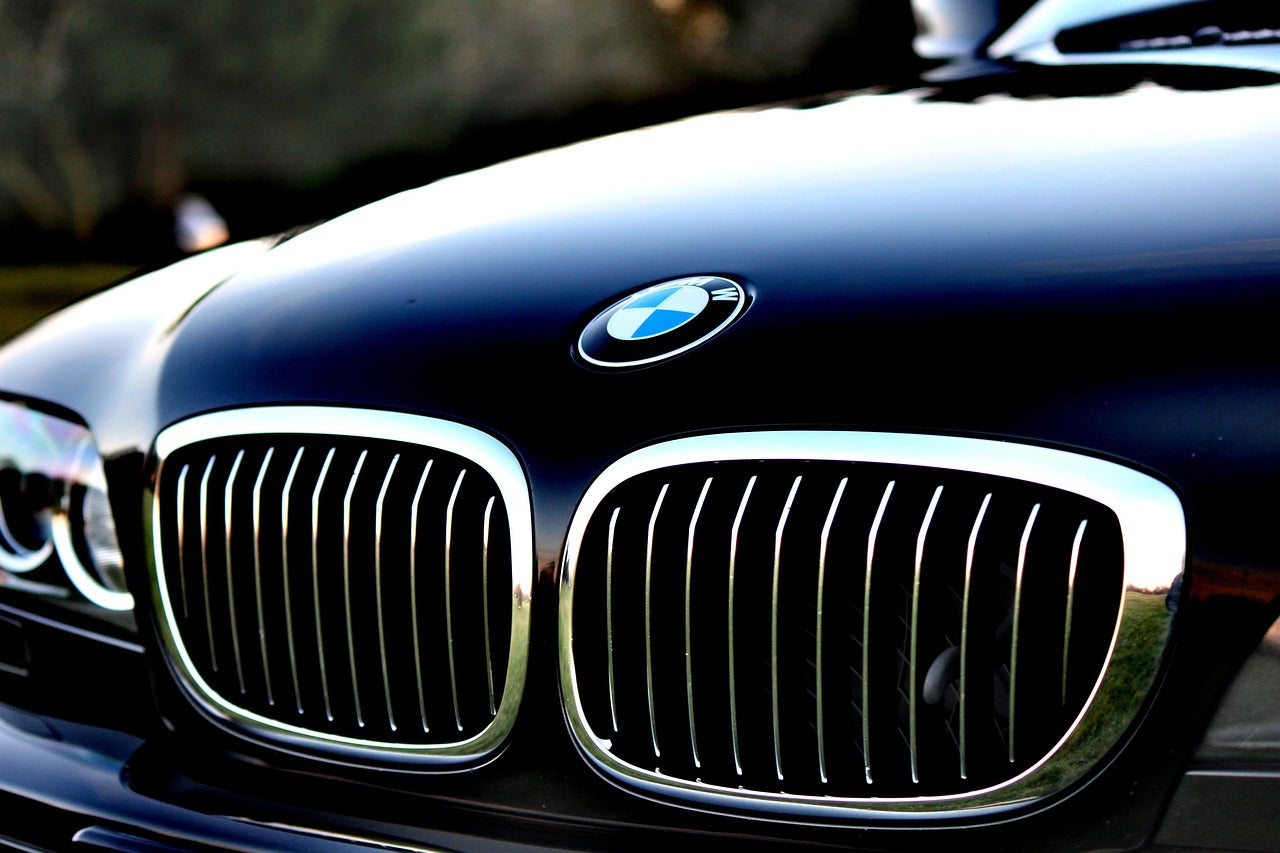What Is Ceramic Coating, and How Does It Work?
Before we dive into the details, let's start with the basics. Ceramic coating is a liquid polymer that is applied to the exterior of your SEAT. It forms a protective layer that bonds with the paint, acting as a shield against external factors such as UV rays, dirt, and chemicals.
But what exactly is this liquid polymer made of? Ceramic coatings are typically composed of silicon dioxide (SiO2) or titanium dioxide (TiO2) nanoparticles suspended in a solvent. These nanoparticles are incredibly small, measuring around 1/100th the width of a human hair. When applied to the surface of your SEAT, they create a thin, transparent layer that is highly durable and resistant to environmental damage.
Now, let's talk about how ceramic coating actually works. When you apply the liquid polymer to your SEAT's paint, it undergoes a chemical reaction known as cross-linking. During this process, the nanoparticles in the coating bond with the molecules in the paint, creating a strong and permanent connection.
Once the ceramic coating has cured, it forms a protective barrier that is hydrophobic, meaning it repels water. This hydrophobic property is one of the key benefits of ceramic coatings. When water comes into contact with the coated surface, it beads up and rolls off, taking dirt and contaminants with it. This makes your SEAT easier to clean and maintain, as dirt and grime have a harder time sticking to the surface.
Furthermore, ceramic coatings provide excellent resistance against UV rays. The nanoparticles in the coating act as a barrier, preventing the sun's harmful rays from penetrating the paint and causing oxidation or fading. This helps to maintain the original color and shine of your SEAT for a longer period of time.
Another advantage of ceramic coatings is their chemical resistance. The protective layer formed by the coating is highly resistant to chemicals such as bird droppings, tree sap, and even harsh cleaning agents. This means that your SEAT is less likely to suffer from etching or staining caused by these substances.
It's important to note that while ceramic coatings offer exceptional protection, they are not completely immune to damage. They can still be scratched or chipped by abrasive materials or improper washing techniques. However, the coating provides an extra layer of defense, reducing the risk of damage and making it easier to maintain the appearance of your SEAT.
Overall, ceramic coating is a highly effective and durable solution for protecting the exterior of your SEAT. Its unique composition and bonding mechanism provide long-lasting defense against UV rays, dirt, chemicals, and other environmental factors. By investing in a ceramic coating, you can ensure that your SEAT stays looking its best for years to come.
The Benefits of Ceramic Coating for SEAT Owners
So, what exactly are the benefits of ceramic coating for SEAT owners? Let's take a closer look.
- Enhanced longevity: One of the biggest advantages of ceramic coating is its durability. Unlike wax, which can wear off after a few weeks, ceramic coatings provide long-lasting protection for your SEAT. This means that you won't have to reapply the coating frequently, saving you time and money in the long run.
- Superior protection: Ceramic coatings create a chemically resistant barrier that shields your SEAT's paint from environmental contaminants. It helps to prevent oxidation, UV damage, and fading, keeping your car looking newer for longer.
- Easy maintenance: Another benefit of ceramic coating is its low maintenance requirements. The coating forms a hydrophobic layer that repels water, dirt, and grime. This makes it easier to clean your SEAT, as water and contaminants slide off the surface more effortlessly. Say goodbye to tedious washing sessions and hello to a sparkling clean car with minimal effort.
- Enhanced appearance: Ceramic coatings provide an additional layer of depth and gloss to your SEAT's paint. It enhances the color and shine, making your car stand out from the crowd. It's like giving your SEAT a brand-new coat of paint without the hefty price tag.
Comparing Ceramic Coating to Traditional Wax
Now that you understand the benefits of ceramic coating, let's compare it to traditional wax to help you make an informed decision.
Traditional wax offers temporary protection and requires frequent reapplication to maintain its effectiveness. It's an affordable option for those on a budget, but it doesn't provide the same level of durability and longevity as ceramic coatings.
Ceramic coatings, on the other hand, may require a higher upfront investment, but they last significantly longer and provide superior protection. They are more resistant to scratches, chips, and staining, making them the preferred choice for many SEAT owners.
Choosing the Right Ceramic Coating Product
Now that you've decided to go for ceramic coating, the next step is choosing the right product for your SEAT. With countless options available in the market, it can be overwhelming. Here are a few factors to consider:
- Quality: Look for reputable brands that offer high-quality ceramic coatings.
- Durability: Check the durability and lifespan of the coating.
- Application process: Consider whether you prefer a DIY solution or professional application.
- Cost: Compare prices and evaluate the product's value for money.
Research customer reviews and seek recommendations from fellow SEAT owners to ensure you make an informed choice.
Step-by-Step Guide to Applying Ceramic Coating
Applying ceramic coating to your SEAT may seem like a complex process, but with the right tools and instructions, it can be straightforward. Here's a step-by-step guide to help you through the process:
- Wash and prepare your SEAT: Start by thoroughly washing your car to remove any dirt or contaminants. This step ensures that the ceramic coating bonds properly with the paint.
- Decontaminate the paint surface: Use a clay bar or iron remover to eliminate any remaining contaminants and achieve a smooth surface.
- Apply the ceramic coating: Follow the product instructions to apply the ceramic coating. Use a microfiber applicator or sponge to distribute it evenly.
- Allow curing time: Let the coating cure for the recommended duration, often around 24 to 48 hours. Avoid exposing your car to water or extreme weather conditions during this period.
- Enjoy the results: Once the coating has cured, admire the enhanced appearance and protection provided by the ceramic coating. Your SEAT will look stunning and be ready to tackle the roads.
Maintenance Tips for a Long-Lasting Ceramic Coating
To ensure the longevity of your ceramic coating, it's essential to follow a few maintenance tips:
- Regular washing: Wash your SEAT regularly to remove dirt and contaminants that can degrade the coating over time.
- Use gentle cleaning methods: Avoid abrasive products and techniques that can scratch or damage the ceramic coating.
- Apply a top coat: Consider adding a sacrificial layer, such as a top coat, to enhance the durability and protection of the ceramic coating.
- Keep your SEAT protected: Whenever possible, park your car in a covered area to shield it from direct sunlight, tree sap, and bird droppings.
Is Ceramic Coating the Right Investment for Your SEAT?
After exploring the benefits, application process, and maintenance requirements of ceramic coating, ultimately, the decision comes down to your personal preferences and priorities. If you value long-lasting protection, easy maintenance, and a stunning finish, then ceramic coating is undoubtedly worth the investment for your SEAT.
Remember to choose a reputable product, follow the application instructions, and maintain your ceramic coating regularly. With proper care, your SEAT will remain protected and looking fantastic for years to come.
Ready to give your SEAT the lasting shine and protection it deserves? Look no further than AvalonKing for top-quality ceramic coating and car care products. With years of expertise in providing the very best in vehicle maintenance solutions, AvalonKing has everything you need to keep your car looking pristine. Check out our products today and take the first step towards effortless car care and impeccable finish.












![[2024 Guide] The Beginner's Guide to Car Detailing (Like a Pro)](http://avalonking.com/cdn/shop/articles/guide-to-car-detailing-like-a-pro-cover_bd2e47ba-ff74-45a7-b00b-bfe2928b73e4_1000x.jpg?v=1651151442)


